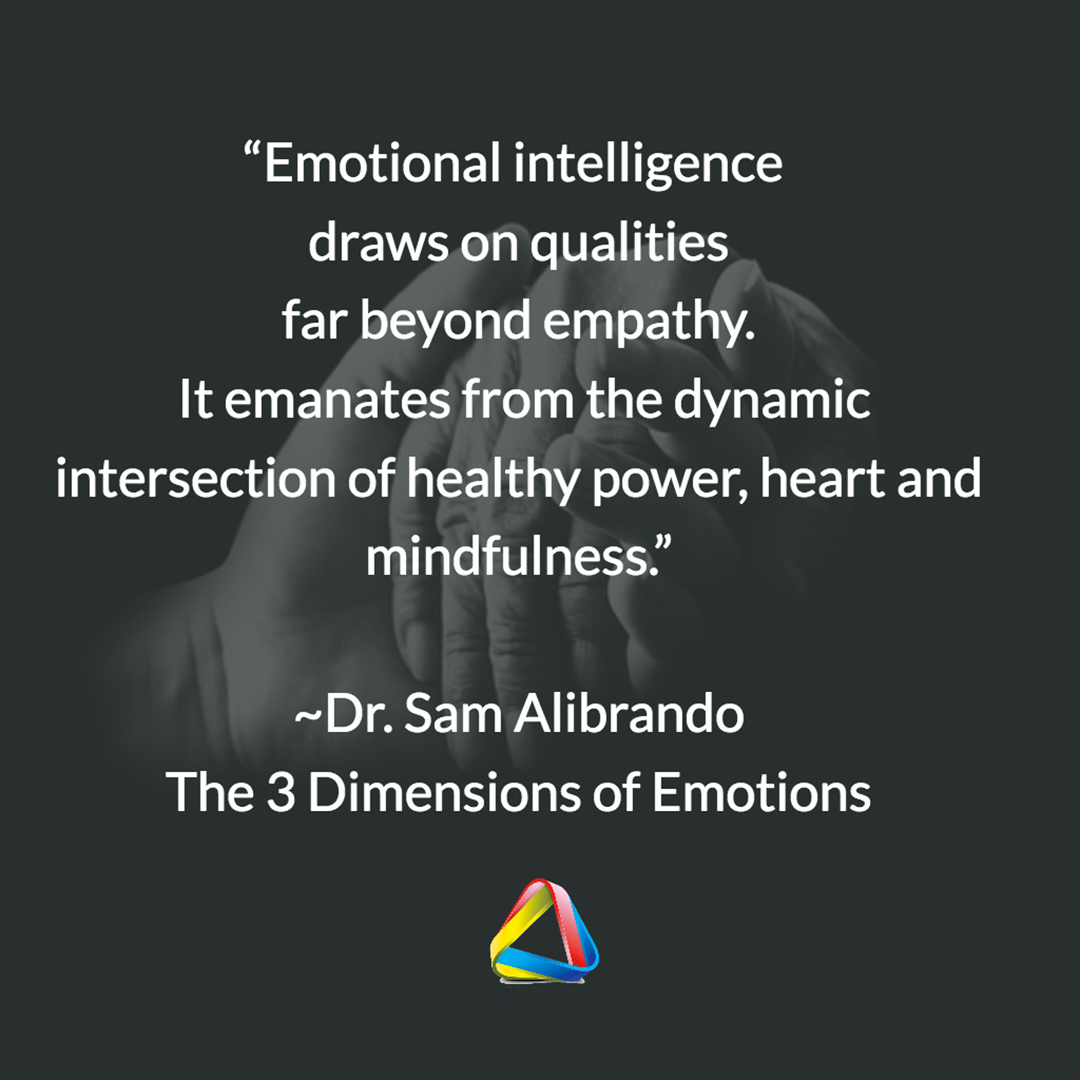Does Emotional Intelligence Have a Dark Side?
In an article published by Scientific American titled “The Dark Side of the Brain: Too Much Emotional Intelligence Is a Bad Thing,” the author suggests that “profound empathy” sometimes comes “at a price.” The suggestion is made that people with too much empathy are likely to be sidelined by stress more than those who do not have as much empathy. The author points to a Frankfurt study where students who were rated as having higher emotional intelligence (as determined by an empathy measure) also had higher levels of stress during an experiment (as measured by the level of cortisol in their saliva). While the study itself may be perfectly valid as far as it goes, there is a notable problem with the magazine article’s conclusion: the author equates emotional intelligence (EI) with empathy. This is a rather common mistake.
When I facilitate leadership workshops on EI, I often invite participants to shout out what comes to mind when they hear the phrase “emotional intelligence.” Within the first few responses the word “empathy” will inevitably come up—and so it should. Empathy is one of the key ingredients of EI—but it is not the only ingredient. All too often we miss the other aspects of EI that make this crucial quality dynamic.
Goleman introduced the concept of EI to the general consumer—including the business world—with his groundbreaking and best-selling book, Emotional Intelligence: Why It Can Matter More Than IQ. In his subsequent works on the topic he boiled EI down to a simple matrix, which accounts for most categories within EI:
If you reduce EI to the single quality of empathy you address only the Social-Awareness aspects, leaving out the attributes of self-awareness, self-management and relationship management—without which, you do not have EI.
In the book, The Three Dimensions of Emotion: Finding the Balance of Power, Heart and Mindfulness, EI is depicted in three dimensions, which incorporate all four attributes in Goleman’s matrix. It comes at EI from an applied perspective, focusing on how to acquire or strengthen EI:
The Heart dimension with its focus on the “Other,” includes social awareness and empathy. (It also includes healthy dependency.) The other two dimensions complement and counterbalance this “Heart” dimension of EI.
The Power dimension is focused on the “Self” and has to do with personal power or agency (along with self protection). From the power dimensions we are able to manage our relationships. In this dimension we have self-confidence, take responsibility for ourselves, set good boundaries and are appropriately assertive.
The Knowing or Mindfulness dimension is focused on neither the Other nor the Self but on “what is as it is.” It involves both self-management and self-awareness. In this dimension the person is mindfully aware and observant, objective, and not easily affected by the emotions of another person.
Each dimension can be either positive or negative in its effect and affect. (To learn more, take the free assessment —The Interpersonal Triangle Inventory (ITI), after which you will receive a link to download the Relationship Circle—a graphic depicting the positive and negative aspects of each dimension.)
The premise of the 3D model is simple: EI is the dynamic balance (or synergy) of the positive aspects of all three dimensions. An emotionally intelligent person operates from the balance of power, heart and mindfulness. If even one dimension falters (is not positive), one or both of the remaining dimensions will get out of balance (rendering the person unable to employ emotional intelligence).
Practically speaking, empathy without positive aspects from the power dimension (e.g., self-confidence, healthy boundaries, candor) and from the Mindfulness dimension (e.g., knowing, self-awareness, objectivity, even-keel and self-control) manifests as a negative form of the Heart dimension (e.g. poor boundaries, hypersensitivity, and hyper empathy). So when a person is tuned in to other people’s feelings (has empathy) but does not have the boundaries that come from the other two dimensions, he or she will, like the students in the Frankfurt study cited above, be overly affected by their “empathy” and unduly disabled by it. They would be frozen like Tin Man in the forest. (See Follow the Yellow Brick Road: How to Change for the Better When Life Gives You Its Worst.)
Without a complete understanding of EI, it is easy for journalists to misinterpret research like the Frankfurt study. Subjects in the experiment who did not have enough knowing (mindfulness) and/or positive self-confidence (power) were more vulnerable to “profound empathy” and the stress that came with it. The problem is not that they had too much empathy but that they did not have enough of one or both of the other two dimensions of EI. The crucial point to keep in mind is that emotional intelligence draws on qualities far beyond empathy. It emanates from the dynamic intersection of healthy power, heart and mindfulness.



